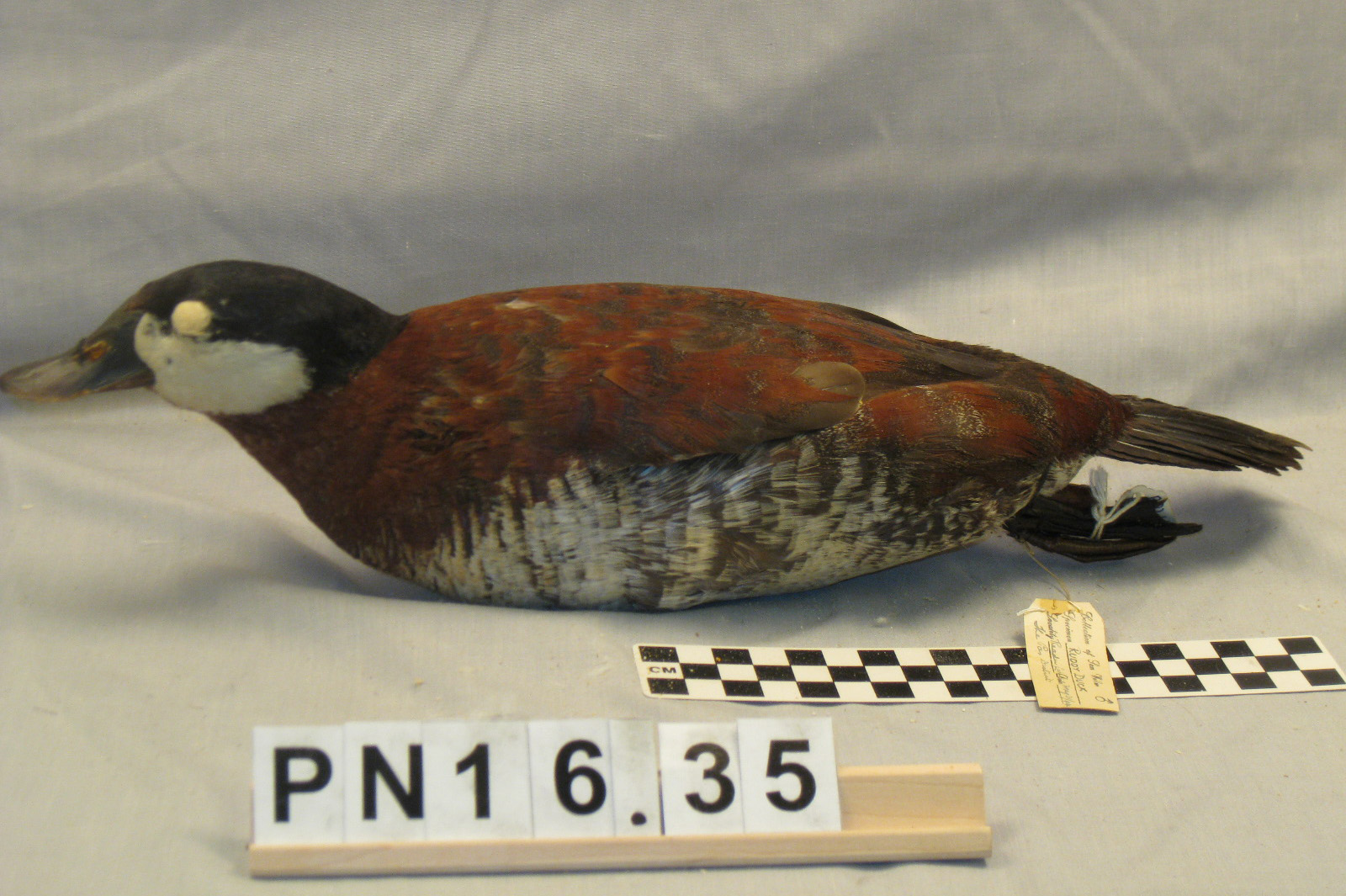This month’s From the Vault item is the humble Oxyura jamaicensis, better known as the Ruddy Duck. A part of the Anatidae family, this bird is best known for its distinctive russet-coloured plumage from which it gets its name. Females and non-breeding males have black beaks while breeding males have a vivid blue beak- therefore this specimen is a non-breeding male. These birds can be found in the marshlands of the southern part of the Prairie regions eating pondweeds, algae, and wild celery as well as aquatic insects and shrimp.[i] The Ruddy Duck migrates to the southern United States and Mexico to avoid the harsh prairie winters.[ii] This particular specimen was found at Reader Lake, Manitoba on May 31st, 1944.
Sam Waller was an avid amateur ornithologist who collected nearly 300 bird specimens in his lifetime. Many of these specimens were killed on accident and found by him or given to him by community members. In this specimen’s case, judging from the lack of damage to the skin, it likely died by accident or of natural causes. It was collected by Sam Waller and was acquisitioned into the collection in 1944. Like the other specimen’s in the ornithology collection, this Ruddy duck was turned into a study skin where the skeleton and soft tissues would be removed and the specimen would be stuffed to appear round. A study skin may or may not include the bird’s beak and feet. In this specimen’s case, it has both beak and feet but no eyes.
Sam Waller’s initial collection was built upon by other amateur ornithologists who donated their own specimens to the Sam Waller Museum. Today the Sam Waller Museum houses the third largest ornithology collection in Manitoba with over 7000 birds!
Description of artefact: medium sized-bird lying on its stomach, head protruding forward with no visible neck. The head is black with white cheeks and black bill. (White cotton replaces the eyes) Top half of the bird is covered in russet-coloured feathers, the bottom is white with some grey feathers. Feet are tied together and positioned folded up, close to the body. The feet are webbed and black with talons at the ends of the toes. Tail is short and a dark grey.
{C}[i] http://www.ducks.org/hunting/waterfowl-id/ruddy-duck
{C}[ii] ibd.


